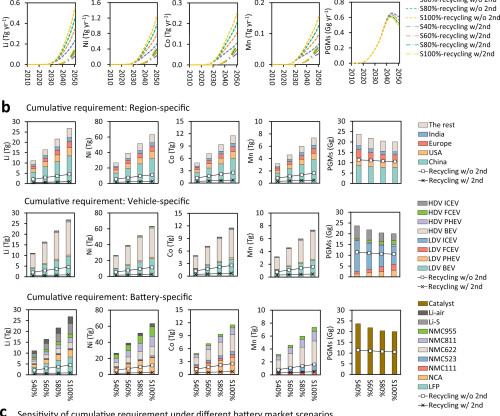Cornell study examines trade-off between critical metals requirement and transportation decarbonization
Green Car Congress
APRIL 17, 2023
Countries should adopt policies that prioritize alternative designs for cathodes/anodes and fuel-cell (green hydrogen) systems to reduce the reliance on primary critical metals. “Recycling w/o 2nd” indicates retired batteries that are directly recycled without a second life as energy storage systems (ESSs). Zhang et al.













Let's personalize your content